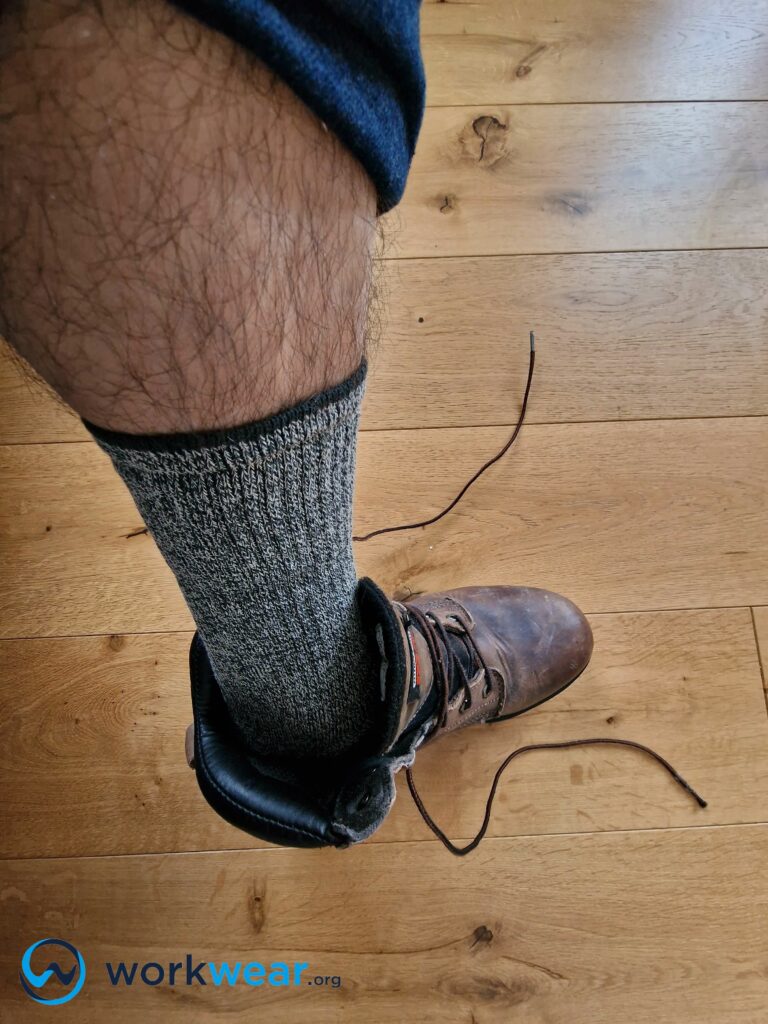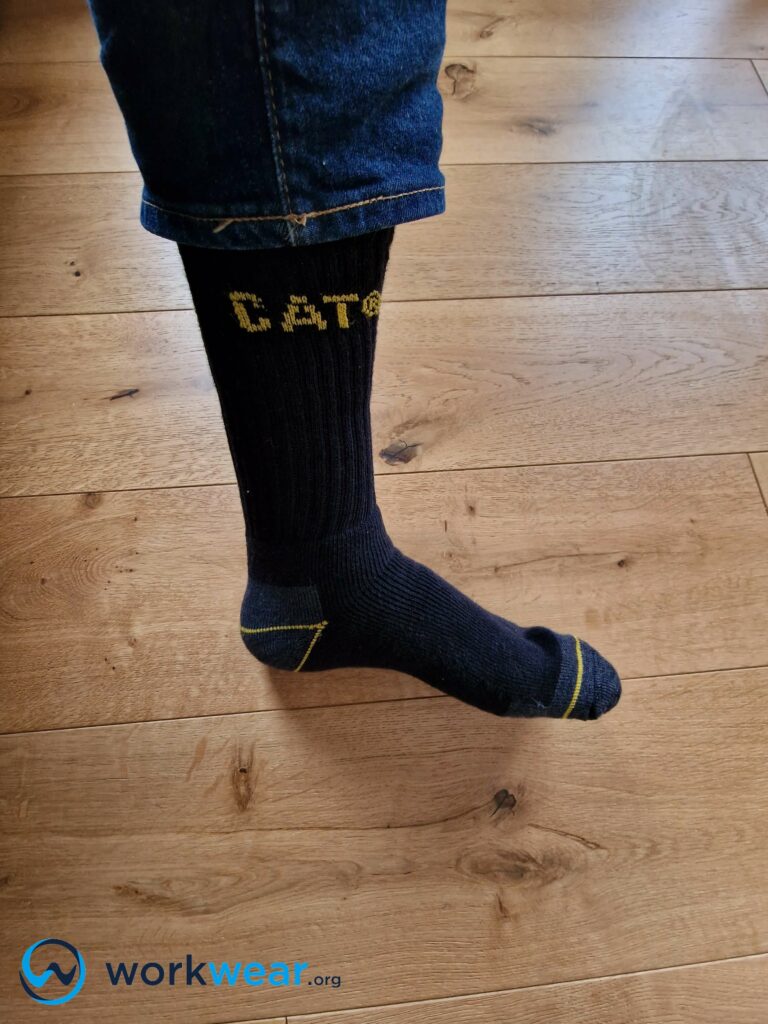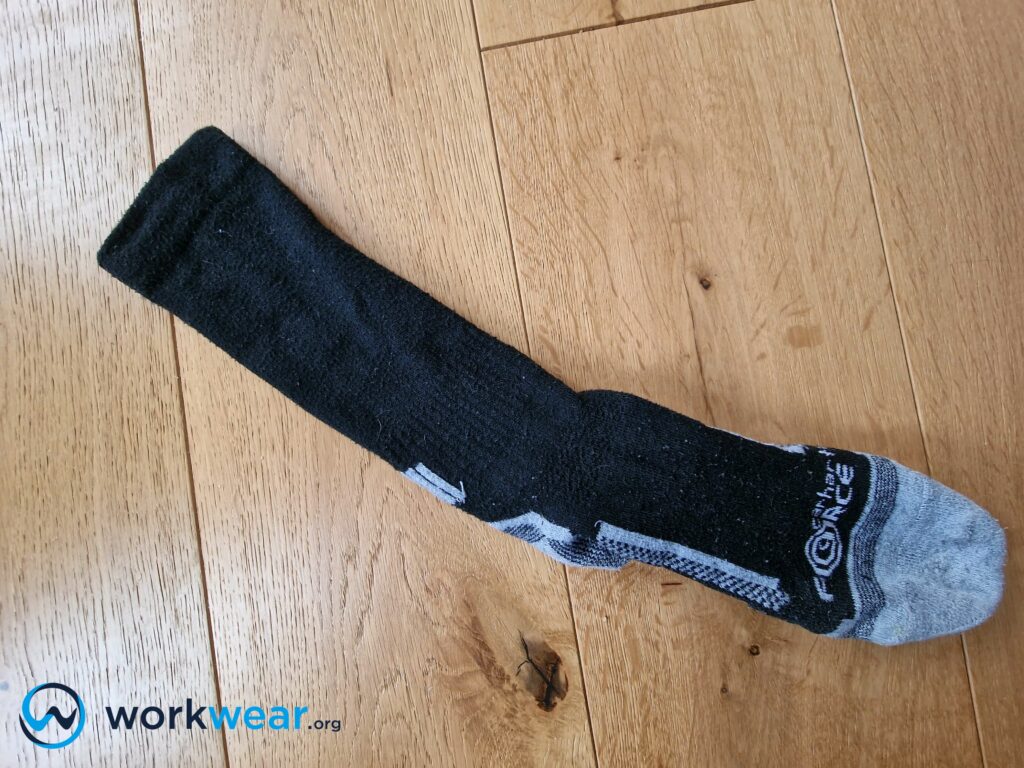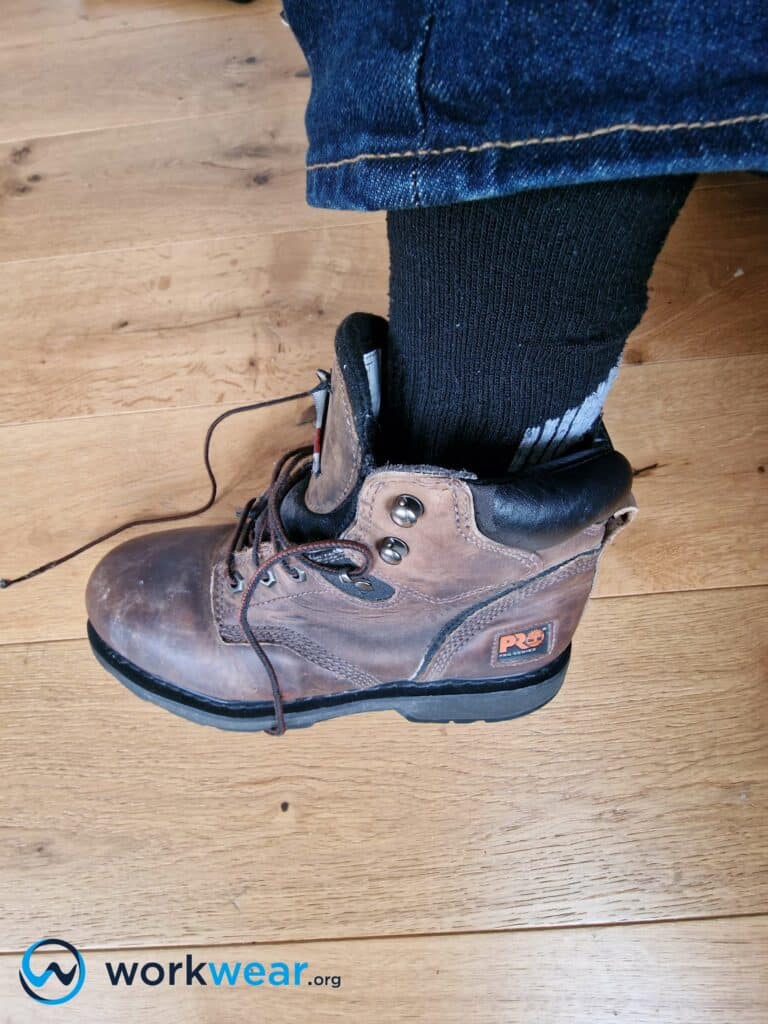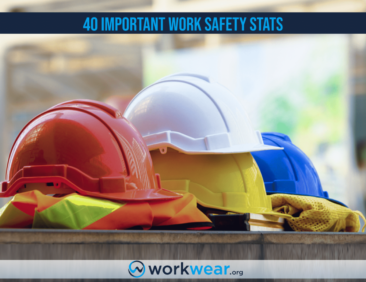Length of Socks for Work Boots
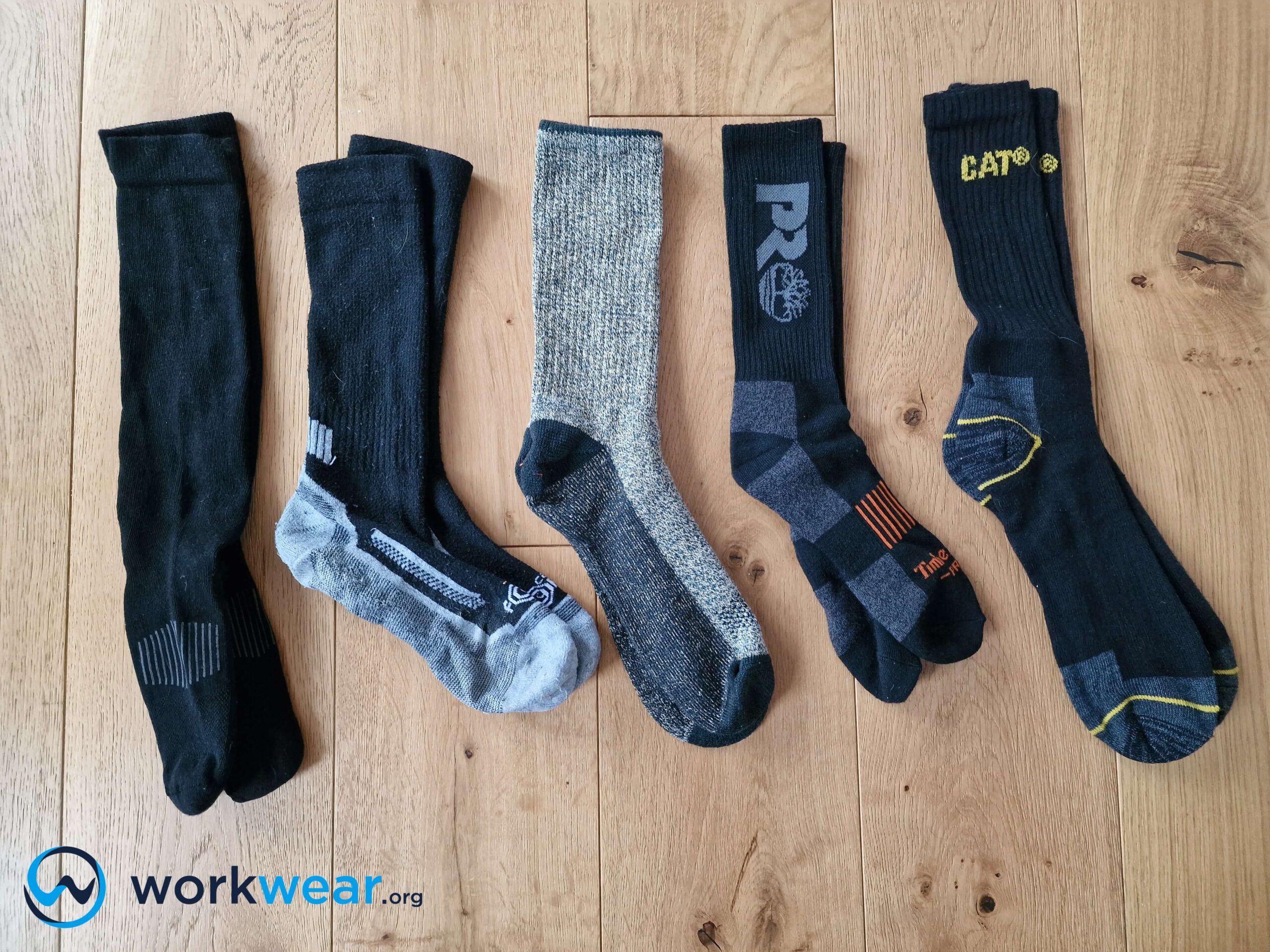
Spending most of the day on your feet can be easier with the right gear. Having the proper work boots on is essential, but you should also consider the length of your socks, as they can help you move more quickly in the workplace. The right length of work boot socks also has a significant role in keeping the feet comfortable while you’re on the job. Work socks tend to be longer than regular socks, given that work boots usually have an upper 6 inches or taller. The socks’ length can be a matter of personal preference or may be influenced by fashion.
However, we recommend getting socks slightly longer than the work boots with which they’ll be used.
This protects the skin from rubbing painfully against the boots’ leather or inner lining. However, personal preference also comes into play when choosing socks’ length, especially with different styles and comfort levels taken into account. In this article, we’ll look at the different lengths of socks and their suitability for use with work boots.
Key Takeaways
Work boot socks are offered in various lengths, which can further be differentiated into long and short options. Short crew socks that reach just above the ankles are considered short. Meanwhile, long socks for work boots include crew socks, mid-calf socks, and over-the-calf socks.
When choosing work boot sock lengths, it’s important to consider the job environment where the socks will be used to get maximum benefits. It’s equally crucial to consider the work boots used with the socks to make the most out of their best features.
While personal preferences play a key role in choosing the right length of work boot socks, we suggest going for pairs that are higher or taller than the work boots with which they’ll be used. This helps ensure continuous comfort to avoid friction with the boots’ upper and inner lining.
Short work boot socks are generally less prone to becoming overly warm. They stay hidden inside the boots, can be used with shorter boot options, don’t feel bulky, and are suitable for wearing with shorts. However, they’re unsuitable for cold surroundings, may allow debris to get into the boots, and offer less coverage against friction.
Typically, long work boot socks are ideal for winter and other low-temperature settings while offering better protection against chafing, especially on the calves. They also shield more of the skin against abrasion, can prevent debris from entering the boots, and support calf muscles better than shorter socks. These socks can be folded for extra cushioning inside the boots and offer versatile use – but they can overheat in warm conditions and don’t look that good when paired with shorts.
Different Work Boot Sock Heights
There are longer and shorter sock lengths available, but the ones we listed below are the most suitable ones for use with most work boots.
Short Crew Socks
As the name suggests, this sock length is slightly shorter than crew socks.
Also called quarter-height socks, they sit higher than the ankles and are ideal for work boots that are shorter than average. Socks with this length can be cooler in warm conditions.
However, they may not offer enough protection against debris and abrasion in the work environment.
Crew Socks
Crew socks are probably the most versatile and popular choice for use with work boots as well as with some athletic shoes (especially the high-cut ones).
They’re designed to sit right below the calf muscle to deliver more coverage than shorter socks. These socks typically extend over the average 6-8-inch work boot height – but they can easily be folded at the top if the wearer wants them to stay hidden inside the boots.
Mid-Calf Socks
Mid-calf socks are built to rest on the middle of the calf muscle and are about an inch taller than crew socks. As a result, these socks are suitable for higher boots, such as the ones with 8-inch heights that need taller socks to prevent unwelcome friction.
They offer enhanced support for the calf muscles for a comfortable experience while staying upright for prolonged periods.
Over-the-calf Socks
Just as the name implies, these socks are high enough to sit above the calf muscle and almost reach under the kneecap.
The length of these socks delivers additional warmth when used in cold settings, such as outdoors in winter. They’re great with snow boots, hunting boots, and even logger boots, mainly used in harsh outdoor conditions.
However, these ultra-long socks aren’t ideal for warm weather and may look awkward paired with shorts.
Short Socks
Short socks can be used with work boots with equally short shaft heights, such as those below the average 6-inch height.
Socks can be short depending on the height of the work boots they’ll be used with, with some crew socks feeling too short when paired with 8-10-inch boots. This is especially true if the socks need a stay-up design and easy ride down with continuous walking. For comparison purposes, we’ll consider socks that fall below the calves as “short”.
Key Advantages of Short Socks
Less risk of overheating
Short socks cover the entire feet and ankles but go lower on the leg than longer socks.
The fairly limited coverage leaves most legs bare, so they won’t easily feel too warm with prolonged boot and sock use.
When worn with shorts, socks with shorter lengths keep most of the calves exposed, so they won’t easily sweat even in warm conditions.
Stay concealed inside the boots
If you’re not a fan of showing your socks while wearing boots (especially when wearing shorts), then shorter socks may work more to your advantage.
Since they stay hidden inside the boots, you won’t need to worry about their appearance hurting the stylishness of your attire.
Do not feel bulky
Short socks are made with less fabric compared to their longer counterparts. As such, they normally don’t take up too much room inside the boots – unless they’re designed with exceptionally thick fabrics.
Socks with shorter lengths typically don’t feel bulky, so walking can be more comfortable since the feet naturally have more space to move inside the boots.
Can be used with shorter boots
Short socks can also be used in even shorter or lower boots since their length allows them to stay hidden inside footwear.
They can even be bunched up a bit to fit into shorter boots if needed if there’s enough space to do so.
Look great with shorts
Short socks with the appropriate boots look much better when paired with shorts.
While there’s nothing wrong with wearing longer socks with shorts, the shorter pairs deliver a more put-together look that the longer counterparts can’t offer.
Key Disadvantages of Short Socks
Don’t offer superior warmth
Short socks only cover the feet and ankles but not a lot of the calves.
In cold weather, this can be a problem since the calves don’t have the coverage they need to keep warm.
This is especially when working long hours in low-temperature surroundings.
Less protection against friction
With limited coverage, there’s a higher risk of more skin being exposed to painful friction.
Shorter socks leave most of the calf and leg area bare so they can rub against the inner lining or leather upper of taller boots.
Can more easily allow debris to get in
Since they’re mostly hidden inside the boots, shorter socks don’t create barriers that can shield the calves in the work environment.
They can easily allow debris (such as pebbles and dried leaves) to enter and cause foot discomfort.
Uses of Short Socks
Short socks are suitable for work boots with shorter shafts that are used in warm weather and for less heavy-duty tasks, such as those by the following jobs:
- Cooks or chefs
- Retail sales associates
- Administrative staff
- Gardeners
Long Socks
Long socks are generally reserved for equally tall boots.
They cover more of the calves and upper legs to keep them safe from getting scratched by abrasive objects (especially when wearing shorts). The enhanced length also offers extra protection in cold weather, keeping the legs in cozy warmth for maximum comfort while working in low-temperature conditions. Depending on the thickness of the material, some long socks can be bunched up to shorten the length and make them suitable for shorter boots without making them too tight or bulky.
Key Advantages of Long Socks
Ideal for winter/cold conditions
Long socks are made with more fabric, offering additional coverage to fight the chill.
They’re better at keeping the feet and legs warm in cold conditions, especially if they’re made with thick or insulating materials that trap heat.
Increased protection against painful friction
With more fabric covering most of the legs, long socks protect the skin, so it won’t uncomfortably rub against the boot’s lining or upper.
It’s recommended that socks be longer than work boots for better protection against chafing, but long socks can offer enhanced protection even when wearing taller-than-usual boots.
Protect against abrasion in the environment
When wearing shorts, long socks provide enhanced coverage, shielding the legs so they won’t easily be harmed.
This is especially true when working in areas where there are abrasive or sharp items that can accidentally scratch the legs.
Can prevent debris from getting in
Long socks also form barriers that repel debris, so they won’t easily get into the boots.
These socks also protect the legs against scratches from debris, such as sharp branches, rough concrete, or wooden walls.
Can be folded for extra padding
Long socks can be folded to increase the padding inside boots that are a bit too loose, helping achieve a more stable walking experience.
This method is especially helpful for boots that aren’t tall, as there will be enough long socks to extend over the top even if they’re folded or bunched inside the boots.
Support calf muscles
Socks that reach up to the calf muscles and beyond offer more support than shorter socks.
This extra support can help prevent strained muscles, enabling comfortable walking or standing for long periods.
Versatile use
Long socks are suitable for tall boots, but they can also be adjusted to perform well even with shorter work boots.
If their material allows them to be folded or bunched up without causing discomfort, long socks can be versatile enough to be used with more pairs of boots for work and leisure.
Key Disadvantages of Longer Socks
Can feel too warm in hot environments
Long socks protect against the cold, but they’re not the best for hot weather, especially if they’re made with thick materials.
With additional coverage for most of the legs, longer socks can lead to an uncomfortably warm feeling when used for long stretches.
Don’t look stylish with shorts
Generally, long socks – particularly those above the calves – don’t look that good when paired with shorts.
However, they can work if the long-socks-over-the-boots aesthetic is the look you’re going for. In most cases, long socks with shorts can result in an awkward look.
Uses of Long Socks
Long socks are ideal for use with long boots, for heavy work, and in cold settings, such as outdoors during winter. They’re great for the following jobs:
- Loggers
- Farmers
- Ski instructors
- Firefighters
|
Pros |
Cons |
|
|---|---|---|
| Short Socks |
|
|
| Long Socks |
|
|
Personal Testing Experience
It’s time to share our experience using two pairs of work boot socks with different lengths. Considered to be on the short side with a length of 7.5 inches, the Dickies Men’s Heavyweight Cushion Compression Work Crew Socks are considerably thicker than options with a similar length. They have ankle and arch compression and ample cushioning, but they’re less durable than polyester socks and don’t provide as much coverage as longer work boot socks. Meanwhile, the Wrangler Men’s Western Boot Socks are long enough to perform well with Western boots as they come with a length of 11.5 inches. These made-in-the-US socks are durable, have good arch support, and are more stretchable than other work socks. However, they’re heavier than other work socks and won’t look that good with shorts.
Conclusion
Work boot socks come in varying lengths, with each option having advantages and drawbacks. While other socks come in more length choices, work boot socks are mostly offered in the following lengths – short crew, crew, mid-calf, and over-the-calf. Work boot socks’ length can be based on personal preferences, but we recommend getting socks that are longer or taller than the upper. This protects the skin on the ankles or calves from rubbing painfully against the boots’ leather upper or inner lining material. It’s also important to choose the sock length that works well with the work boot height and with the job environment wherein the socks will be used.
FAQs
- Are over-the-knee socks ideal for use with work boots?
- Socks that go as high as the knees or even higher may not be great for work boots. While they provide superior coverage, the extreme length can restrict the knees’ movements and cause discomfort and limited mobility.
- Are all long socks suitable for work boots?
- Only sometimes, although some sports or casual socks can be used with work boots. In some cases – such as when wearing steel-toe boots – it’s best to choose work boot socks with reinforced or padded toes. This feature can prevent the safety toe cap from pressing or rubbing painfully against the toes.
- Can short sports socks be used with short work boots?
- As long as the material keeps the feet protected against chafing and overall discomfort while on the job, most short sports socks can be used with short work boots. However, they need longer or higher than the boot shafts to protect the ankles and lower legs from painful friction.
- Will long socks maintain their length throughout the day?
- It depends on the socks’ design. For example, long socks with ribbing or a stay-up structure are designed to maintain their length, while socks without these features will eventually slide down with continuous foot and leg movements.
